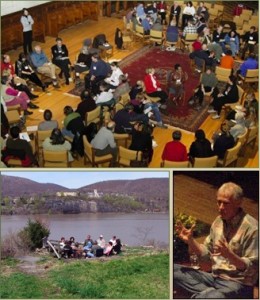
On June 5th, roughly 600 activists and marchers began a five day 50 mile hike from Marmet, West Virginia to Blair Mountain in protest of mountain top removal (MTR), a destructive and highly contested form of strip mining. Blair Mountain, one of the last, originally standing mountains in that region of Appalachia to avoid MTR, is also an historical site with battle fields and artifacts dating back to the Civil War and before. It’s also, like many of the pristine mountains in that region, loaded with coal reserves. Unfortunately, for the residents of states such as West Virginia, Kentucky and Virginia, MTR is an all too common reality. Current data show that as of 2010, an area the size of Delaware has been mined using MTR techniques and there is, tragically, no end in sight given our insatiable demand for coal-fired power.
The March on Blair Mountain aims to draw attention not only to the environmental devastation plaguing Appalachia, but to the countless union jobs lost as a result of MTR. Before MTR became standard practice, union laborers mined for coal in these same mountains using traditional deep-mining methods. Today however, the mechanization of MTR has made the mining process more “efficient” thereby cutting half the workers that deep mining traditionally employs. In Boone County, WV the state’s most heavily mined county, 2,053 miners working in underground mines produce more than 10 million tons of coal a year, while 1,086 surface miners produce 12 million tons. One local miner was quoted as saying, “MTR is a job killer, it is not a job creator.”
While coal mining alone remains a contested topic for both energy policy and environmental policy, what’s currently taking place in Appalachia is complete annihilation of million-year old mountains and the associated streams and ecosystems that sustain life in that region. Tens of thousands of acres of land have already been demolished – if not irreparably – and water tables are now laden with coal runoff and other debris impacting the health of local residents and wildlife alike. At the same time, energy demand continues to rise, while the Earth’s precious resources remain finite. And mountain top removal is just one of the high-impact energy extraction industries; the Alberta tar sands, hydrolic fracturing (“fracking”) and deep-ocean drilling are all loosely regulated, dangerous and environmentally damaging businesses.
We need a cleaner, renewable revolution for our pressing energy woes and we need clean, green job alternatives and training options for those pushed out of archaic industries, such as coal mining. This revolution also comes in the form of energy efficiency behavior changes at home and renewably sourced energy options from utility providers. The Earth simply cannot sustain current energy demand without an alternative (and immediate) solution on a global scale. Please visit The Last Mountain to learn more about action points you can take and to see clips of the new documentary film coming out this month about Blair Mountain.










